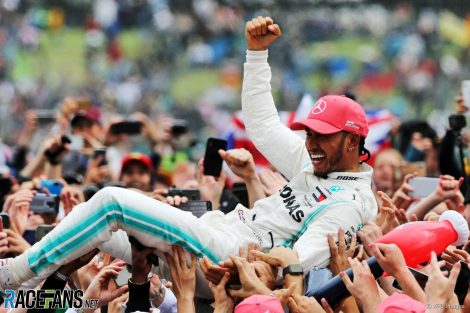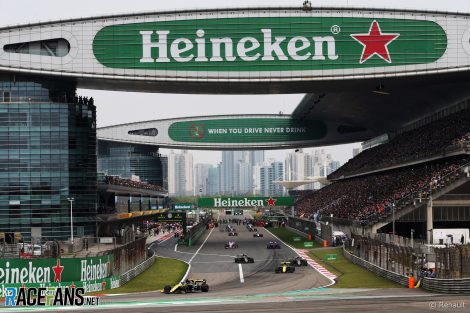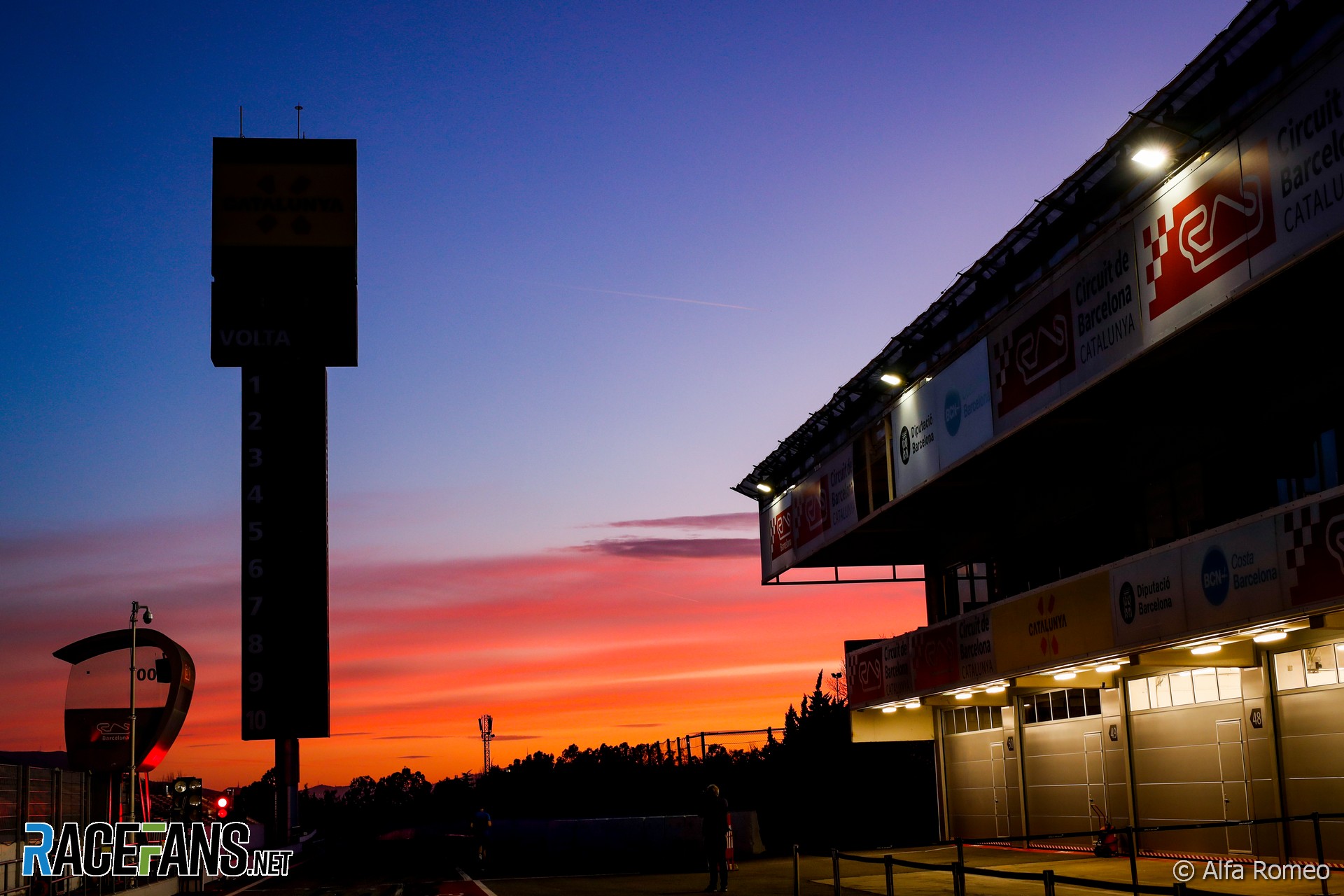Since the sun set on pre-season testing at the Circuit de Catalunya two months ago, Formula 1 fans have waited to see when and how the cars will finally return to the track.
Amid the uncertainty created by Covid-19 crisis, one thing is absolutely certain: Human behaviour as we knew it has changed totally, at least for the foreseeable future. Based on prevailing wisdom such changes will affect every aspect of life, and, by extension, motorsport generally and Formula 1 more specifically.It is impossible to predict exactly how F1 will ultimately be affected, nor is this analysis intended to provide a definitive glance into the future of the sport or ‘forward-looking projections’. It is, though, intended to provide pointers to the impact that Covid-19 is expected to have on the essence (or ‘DNA’) of F1, and how that will likely affect the sport, its drivers and teams, promoters, and last but not least, fans.
A caveat, though: Much of what is predicted below is predicated upon regional and national authorities gradually easing restrictions and life returning to relative ‘normality’ by the end of June in most regions. Should a ‘second-wave’ of the pathogen hit the sport, expect F1’s recovery to be delayed by that period (at least), and potentially longer.
For all its brashness, Formula 1 survives in a symbiotic infrastructure of its own creation, a sensitive ecosystem that evolved over its 70-year life. Disrupt just a single element, and that disruption reverberates throughout the sport, affecting every adjacent facet.
This was true from the Le Mans disaster of 1955 to the ramifications of F1’s double tragedy at Imola in 1994, to arguably the most sport’s profound disruption: The sale of F1’s commercial rights in 1998-2000 by the FIA, which set the tone for mega-monetisation of F1 by a succession of profiteers.

Pre-1998, the teams held F1’s destiny in their collective hands: What was good for teams was good for F1, and vice-versa. No more: what is vital for F1 rights holder Liberty’s shareholders (return on investment for its FWONK stock) is punted as being good for the sport and by extension for teams. Forget not that where all teams once shared 90% of income, now they split 47.5%, save for bonuses paid to a lucky quartet.
It follows that under normal circumstances 60% of teams need to work twice as hard for their crust, with resultant workloads on crews and associated parties. Imagine, then, the impact of F1’s planned 18 races in 25 weeks by way of a ‘travelling bubble’ – minimising social contact with the real world to stage (profitable) ghost races at the rate of one every one-and-a-half weeks in order to salvage 80% (by number) of its calendar.
Advert | Become a RaceFans supporter and
True, the business model being punted to race promoters is based on this column’s original proposal. Of course, on-track safety will of course be maintained. But what about the health and safety of crews? Then, compounding this fatigue for fans and sponsors alike, will be the competition between championships for viewer attention, recently described by the FIA’s deputy president for sport, Graham Stoker, as a “turf war”.
“It will be an enormously competitive and potentially very crowded environment, and in one way that’s what we’ve got to hope for,” he said. “We want to see the return of the enormously vibrant and diverse motorsport environment we are used to. However, it will need very careful management.“When we look at things such as the International Sporting Code and international sporting calendar, the approach has to be flexible. It’s crucial that we prioritise the staging of events. What would be counter-productive would be to get involved in turf wars.”
Consider the overload on fans, desperate for ‘normality’ after extended lockdowns, if FIA series – managed by commercial rights holders – forced 80% of their original count into 50% of a calendar year. Imagine the rout on sponsors, who will wonder where eyeballs disappeared to during a plethora of clashing motorsport events. Consider, then, the chaos given that other sporting genre, too, are maximising their truncated seasons.
A simple solution would be for the FIA, which carries ultimate responsibility for all global motorsport, to ration the number of events that may be staged on a pro-rata basis. A rule of thumb could allow for series to conduct 50% of their events given that half the year should remain once host events (hopefully) get under way. So 11 of 22 for F1, six of 11 for World Rallycross, four of the remaining seven for the World Rally Championship and so on.
As it is, these three series alone are pushing to stage over 30 events in 25 weeks. Then add Formula E, what is left of this year’s WEC season and international categories such as W Series and DTM. Given that all calendars have effectively been scrapped, the FIA, which approves all dates via its World Motor Sport Council, could potentially avoid overcrowding, but is bound by commercial agreements.
Of course the more races that are held has a direct bearing on the state of the FIA’s coffers. More races held means more points scored, and F1’s entry fees are based on points scored by drivers and teams in the previous year’s championship.
Advert | Become a RaceFans supporter and
For the F1 races which are stages this year, restrictions on the number of personnel which may attend mean written media, such as the site your are reading, is likely to be excluded, certainly during early events. While such a move is both unacceptable and doubtful from a health perspective – scribes and snappers are no more susceptible to Covid than, say, F1’s own television camera crews – and this could have profound effects on the integrity of the sport.

Further, the independent media exists to hold authorities – whether sporting or national – to account, and without such checks and balances who will ensure that all protocols are fully adhered to? If no more, F1 owes it to all personnel – and their families – to permit independently monitored checks.
Clearly it suits the commercial rights holder to ‘control’ the free media while providing access to paying outlets such as broadcasters, but according to sources this runs counter to the FIA-F1 commercial agreement originally approved by the European Union, and it remains to be seen whether video conferences of sufficient duration are provided with teams and F1 personnel at critical times – Covid-19 crisis or not.
Hopefully these fan bans will only prove temporary, and more so that next year brings with it a return to (largely) open gates, even if these are less ‘ajar’ than in the past. Social distancing protocols – if not regulations – are, though, likely to mean that packed grandstands and podium ceremonies are over for the foreseeable future.
Lewis Hamilton crowd-surfing at Silverstone; giant Ferrari flags at Monza; fans crammed into every possible gap in Monaco; packed F1 fan festivals in central London? Forget: for now, in any event.
Thus, the British circuit’s hopes of pulling 140,000 fans on race day seem over, as are the sights of packed stadium sections in Mexico. Indeed, popular circuits could see capacity cut by up to 50%, unless further stands are erected in less ‘viewable’ areas. Either way, tickets prices will rise while race promoter income is likely to drop drastically, reducing their ability to cover annual hosting fees of $20m upwards.
Go ad-free for just £1 per month
>> Find out more and sign up
All this assumes that hordes of fans will reach ‘away’ circuits in the first place: Talk in airline circles is of massively hiked ticket prices and deletion of centre seats, which will make ‘foreign’ F1 events less affordable fans, with stringent health and visa requirements making it increasingly unpleasant. Until effective vaccines are developed air travel could be banned at a stroke; and who would risk cash on that (again)?

Less attendance means less on-site activation for sponsors, with knock-on effects for teams – last year saw two million fans attend races, this year the number is likely to be a fraction of that if at all, and next around one million. Will sponsors who need to interact with fans still pay top dollar for such numbers? Hardly likely.
Thus, a number of battling independent teams could fold, while boards of manufacturer teams – all teams are only committed to the end of 2020, although Renault gave a ‘soft’ commitment to remain until 2024 – are likely to reconsider their future participation before signing the new Concorde Agreement. More than a few of their number are seeking state aid, and F1 participation hardly sits well against a background of begging bowls.
Expect exits, and ever-stricter budget caps, potentially dropping well below the $145m/$140m/$135m levels the teams are likely to agree to next week for 2021-23. Indeed, future budget caps of $100m per year cannot be excluded – achieved through stricter homologation of parts and elimination of costly frills. Who needs fancy hospitality units carted around Europe by 35 trucks when F1 is on its knees and cutting costs at every turn?
Re-calibration will be the name of the game across the sport in future.
Liberty could, of course, compensate for reduced promoter income by pushing up TV, advertising and hospitality rates, but this would trigger inevitable downward income spirals, so the obvious solution is to further boost calendars, probably to 25 initially and even 30 thereafter. Not only would this (hopefully) return revenues to previous levels, but appease broadcasters who would have more events to broadcast.

This though, means grands prix on average every fortnight across an entire season – rather than nine months – placing massive logistics burdens and workforce stresses on teams, and thus schedules are likely to be compressed strictly into short, sharp two-day events without space for pageantry, regardless of history.
If that doesn’t suit the likes of Monaco – which, according to our latest information, does not get its event for free, but pays only modest fees – then tough on its traditions.
Finally, expect F1’s own TV service to improve dramatically over the next few years as Liberty endeavours to take income in-house by bypassing broadcasters. During this lockdown period Netflix has converted swathes of viewers who would usually tune in by antenna or (at a push) satellite into streamers, and this momentum is likely to aid Liberty in finding traction for F1 TV Pro.
Covid-19 will change F1, for better in some aspects and worse in others. Will the essence of the sport, namely for the fastest driver/car combination over a set distance at a particular avenue on a specified day, change? Hardly, if at all. Will global consumption of that spectacle change? Yes, largely for the better for the TV audience – which outranks live attendances by 500:2 over a season – will benefit greatly.
As in all other walks, post-Covid life will change, but humans have survived greater crises and evolved into improved beings as a result, and the same can be expected from F1. It will be different, but hopefully better for it.
RacingLines
- The year of sprints, ‘the show’ – and rising stock: A political review of the 2021 F1 season
- The problems of perception the FIA must address after the Abu Dhabi row
- Why the budget cap could be F1’s next battleground between Mercedes and Red Bull
- Todt defied expectations as president – now he plans to “disappear” from FIA
- Sir Frank Williams: A personal appreciation of a true racer






shadow13 (@shadow13)
6th May 2020, 12:41
I’m slightly confused as to why there is so much talk about drastic effects on the sport multiple years into the future. F1s problem with covid is that they are going to lose a tonne of money this year and that will also likely reduce money for next year with sponsorship drying up as stated in this article. By 2022 I would be surprised if the sport is noticeably altered by covid though. The problems that F1 needs to focus on are protecting the teams from going bust over the next year or two and managing its return to ‘normality’ in an appropriate way which minimises it’s economic loss without being reckless.
The budget cuts agreed seem an appropriate middle ground between the needs of the smaller and bigger teams. I think suggesting they need to reduce ever further is a mistake. Yes it would help out the likes of Haas and Williams but I’m not sure as fans that is the way we want those teams helped. I don’t want the big teams dragged down to their level – I’d prefer to see the smaller teams pulled up. If the suggestions are because the effects of covid will be so dramatic that the teams have to do this I would point to the financial crisis of 2008 which multiple of the current teams survived through.
BasCB (@bascb)
6th May 2020, 15:00
The next changes after the virus is under control are due to the large worldwide economic downturn @shadow13. That will make life hard for the lower end of the grid and could well mean some (most?) of the manufacturers quit the sport in the next 2-3 years.
shadow13 (@shadow13)
6th May 2020, 17:02
I know there will be an economic downturn but the research so far has suggested it will be a short sharp shock not a long drawn out depression like after 08. Thus what I said holds true – the biggest focus for F1 needs to be on helping teams survive the next 2 years. I think the threat to F1 teams at the lower end of the grid over the next 2 years is huge but I don’t really see what the problem is for those teams in 3/4 years time due to covid 19. Obviously there are huge issues that predate covid which threaten their survival but that’s a different story.
Yaru (@yaru)
8th May 2020, 18:14
If I may ask, which research is this? As far as Im aware there’s more expecting a U-shape recovery than a V shape one.
The problem is that this downturn is mostly supply side and that supply comes from people not being to be productive because the virus prevents them from doing so. And supply side problem of left draught out would lead to a demand side problem.
The 08 crisis was relatively easy in the sense that it was just a (albeit large) demand side issue. That means stimulus and QE would generally work.
For a supply side downturn, you actually need to undo the supply side issje and thats just harder to do before a vaccine.
Biskit Boy (@sean-p-newmanlive-co-uk)
6th May 2020, 13:22
There is no chance of the smaller teams getting “pulled up” to the level of the top teams. Even prior to the emergence of Covid 19 there wasn’t enough sponsorship money to go around.
Even teams at the back of the grid produce amazingly fast cars. We could have a grid of those and have some amazing racing. Not only could it be commercially bankrupting to the have to spend another 50-100 million, reduce the cars lap time by a second or two and move to the front of the grid, but it’s also morally bankrupting.
We have to stop thinking what we’d “prefer” but rather what is fair and achievable.
GongTong (@gongtong)
7th May 2020, 7:27
Well said @sean-p-newmanlive-co-uk
Chaitanya
6th May 2020, 14:03
This Pandemic has given Liberty a golden oppurtunity to cull all the special favour given to handful of top teams including the releasing stronghold of Mafia.
BasCB (@bascb)
6th May 2020, 14:58
This needs some time to sink in.
I get the idea of expecting more races. But short term, I think it could well have to be LESS races. Why? Because for the next year or 2 we might be in a situation where events might be cancelled (postponed) due to flashes of higher R in regions. So it would have to account for a higher flexibility.
I think that it is stupid (yes, I wholly understand why they are trying to do it, but think it is not a good idea) to cram all those sporting events into so little time (I am pessimistic about starting things at a larger scale come june, even though Austria might happen). Sure, at first people will be thrilled for all the sports returning. But will that last? And will we all like seeing as much of it? I don’t think we will.
Sven (@crammond)
6th May 2020, 16:34
@bascb
Yeah… the current highly irresponsible rush for reopenings will inevitably lead to a second wave an order of magnitude bigger than the first. Any return to ‘normalcy’ this year, even in June, is highly optimistic. A more realistic timespan would be 2-3 years from now.
Jere (@jerejj)
6th May 2020, 17:00
@bascb I don’t quite get the higher R-reference. I googled it and checked the following Wikipedia-article in case that might be it: https://en.wikipedia.org/wiki/R-value_(insulation)
Sven (@crammond)
6th May 2020, 17:27
@jerejj
Basic Reproduction Number
Basically the number of people an infected person infects on average, which then is the exponent of the function with which the number of infections grows within a population. For a pandemic to stop, this number needs to be lower than 1.
JC
6th May 2020, 17:36
This. Before lockdown it was circa 3. Now around 0.7
Its the first thing to show people (mostly dismissive US residents) who claim covid-19 is “just the flu”.
Jere (@jerejj)
7th May 2020, 6:58
@crammond Thank you. Also for the link.
DB-C90 (@dbradock)
7th May 2020, 4:25
@bascb I get why they “want” to have more races squashed into as shorter period of time as possible but like you can’t see everyone being all that thrilled.
I’m sure the sponsors and potential sponsors will also see that it would be unrealistic to expect maximum eyeballs for every one of those races, indeed for any race, because :-
a) there is likely to be other sport competing for the same time slots
b) most people wont be wanting to watch races any more frequently that we have been used to in past seasons
There is also, as you say, a possibility that there may be a need to defer/cancel some in the event of a breakout of the virus in some regions as well.
Surely then F1 would be far better served by trying to arrange a “moderate” calendar that has the ability to maximise eyeballs rather than lose significant tracts of them due to unrealistic timing, and also provide some flexibility against further outbreaks.
I think we all agree that F1 will be very different – my fear though is that in its panic to prop up FWONK’s share price, this “race at all costs with whatever silly changes we can make philosophy” might have entirely the opposite effect.
Aleš Norský (@gpfacts)
6th May 2020, 18:22
The first 18-race season in F1 was 2004.
Markus (@aesto)
6th May 2020, 20:00
I’m honestly surprised Liberty has continued to give the media the same kind of access they’ve enjoyed before. Independent media is great for us (hardcore) fans of course, but what does Liberty get out of it? They give up a lot of control over the information that comes out of F1, and I assume that providing paddock access to so many independent journalists isn’t trivial either. The current media model is basically still the Ecclestone approach, who needed the media to promote F1, because back then, FOM did very little promotional work of its own. Now that Liberty is actually using social media, YouTube, etc. what do they get out of independent coverage? Of course I’m happy they’ve continued to allow it so far, but a little surprised as to why. Would be very interested in reading an opinion piece in which you argue why Liberty still needs you.